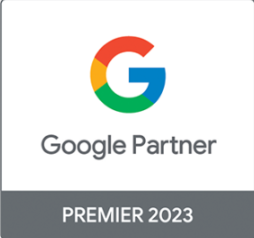Before we start talking about the best CRO best practices. Let’s first begin with understanding what Conversion Rate Optimisation is. Conversion Rate Optimisation is a process that involves optimising websites or apps to convert visitors into leads and leads into customers. CRO helps businesses increase the percentage of website visitors to take a desired action such as filling in a form, subscribing to newsletters, making a purchase, creating an account or otherwise. This process involves understanding how users navigate through your website or app and which actions they take, and most importantly finding out what’s stopping users from completing an action.
CRO generally involves generating ideas for different elements that can be enhanced on your website or app and then verifying those hypotheses through A/B testing and multivariate testing using various CRO tools.
Conversion Rate Optimisation is important because it enables you to reduce the cost of acquiring your customers by gaining more value from the visitors/users you already have. By optimising your website or app your conversion rate will increase revenue per visitors, thus acquiring a lot of customers, and grow your business.
For example, if your home page has a conversion rate of 5% and receives an average of 1000 visitors a month, then the page will generate 50 conversions per month. If the conversion rate can be improved to 10% by optimising different elements on the page, the number of conversions generated increases by 50% to 100 conversions per month.
When it comes to increasing conversions, there is room for improvement and the best businesses are constantly iterating and improving their websites and apps to create a better user experience and increase conversions.
CRO best practices that you can test on your website to improve sales, leads and profit:
Reduce Form Fields
Get rid of fields that are unnecessary in your form. Forms always have to be above the fold and filled in effortlessly. Whenever you consider which fields to add to your website form, always ask yourself which information is actually needed. Sometimes businesses have the tendency to add additional fields on their forms to make their jobs easier, this could, however, have a negative impact on your conversions. The less typing your visitor has to do, the higher the chances that your visitors will submit their information.
The placement of a form on a landing page is also important. Placing a form on the right-hand side of the landing page was once the best practice for all websites. However, this no longer seems to be the case anymore. Recent tests have shown that contact forms on the right side of the page do not always perform better.
For example, look at Wistia – they have placed their form in the centre of their landing page. Or Unbounce, which uses chat boxes as a form on the left side of their landing page.

There’s really no rule to this – you simply need to test which placement works best for your website. It is all a part of the growth-driven design process that each company has to go through.
The Use of Contrasting Colours for Your Call-to-Action (CTA)
You may have read case studies that say a red call-to-action converted better than a green one. However, this does not imply that to improve conversions you should simply use a red CTA.
It is all about choosing which colour pop up better on the background of your landing page. So, when you change the CTA button from green to red and conversions improve by 35%, just know this is the better contrast and it is not the actual colour itself that improved the conversion rate.
As an additional tip, it is that you choose a CTA colour that hasn’t been used anywhere on the landing page in order for it stands out well and attracts the necessary attention.
Test Your Call-to-Action Button Text
After attracting visitors to your site, one of the best tools you have at your disposal to turn your visitors into customers is using call-to-actions. These CTAs have short phrases that prompt a visitor to do something on your site. Instead of using phrases like ‘submit’ or ‘sign-up’, maybe try using your CTA button text to inform visitors what they must expect on the next step after pressing the button.
The image below is one of the A/B tests a conversion expert, Michael Aagaard implemented:

According to Aagaard, highlighting the benefits “Get started” in the button text is the reason the conversions improved. However, there is no such thing as a perfect formula for a CTA, as long as a CTA button text grabs attention and conveys a sense of urgency that leads a visitor to act.
You can also use Content Optimisation Systems (COS) like HubSpot, to view the performance of your CTAs or use HotJar, which allows you to visualise how your visitors engage with your site and it will show you an interactive heatmaps and recordings of where your visitors are being drawn to the most whilst on your website.
One thing you need to be careful of is having too many CTAs on one page because it can confuse the visitors regarding which action to take. It is better to avoid giving your visitors too many choices and keep it to at least one or two CTAs on a page.
Add a Punchy Headline
Headlines drive traffic. They ought to be as specific as possible because this will be the thing that visitors will read on your landing. So it has to be the best one.
Clever versus Clear headline.
Many have dealt with this topic. And many agree that it depends because being clever or witty is not inherently bad. However, it is once clarity is sacrificed.
The headline ought to be sweet, easy to understand, should have urgency, should have power words, trigger emotions, and it ought to be catchy.
That’s a lot of work. But there are a few free tools that will make your life easier and can help you write headlines that will increase conversions like HubSpot blog topic generator and CoSchedule headline analyser.
Make Proper Use of Your Images
All the images shown on your website are ought to have a purpose behind them and may not be used to merely embellish the pages, as it may cause you to lose credibility. On the contrary, images will prove to be powerful tools to clarify what you offer on your site or to better shows your brand identity to visitors. Try replacing cheesy pictures with photos of real people or with appropriate and original infographics that address user doubts and questions – make your images helpful and useful, not simply beautiful.
Help Shoppers Get Answers to Their Questions Quickly
People who shop online do so because it is convenient. They do not want to waste their time traveling to the shops when from the comfort of their homes they can easily get what they need.
Naturally, these shoppers expect to find what they need quickly and buy without any hassle, of course. However, when they cannot find what they want, it might frustrate them and result in losing the opportunity to generate a conversion. Always keep this in mind when designing your CRO strategy.
According to Avaya, consumers would rather not call a company, but would rather interact through messages or social media. This is common among millennials.
It is obvious that one of the best practices for CRO is to help shoppers get answers quickly. Do not make them call you. Instead, always provide the answer immediately when they land on your page.
If you want to make more sales or get more leads, live chat box support could be an excellent addition to your website. Visitors can get their questions answered quickly. This might make it easier for visitors to decide on which product to buy.
Wrapping Up
There are countless variables that make up a single successful landing page.
It is alright to just fix one. But fixing all of them is the only way to get those conversions you are looking for. As always prioritise your customers’ needs and experience and expectations. Focus on what they are looking for and what drives them take the desired action on your website.
Fortunately, some of the finest CRO experts work with us at Algorithm Agency. Their work experience has helped provide you with a simple cheat sheet to follow and help you make changes and adjustments that will increase your sales or leads.
Take some time and look through your key landing pages and see where some of these issues might be existing.
Because after all, the best CRO practices you need are already out there. You just need to find what your customers respond and what drives leads or sales to your business and do something about it today. So what are you waiting for?
If you are not sure where to start your CRO testing strategy Contact Us.
Article Author : Awongiwe Ntaote




